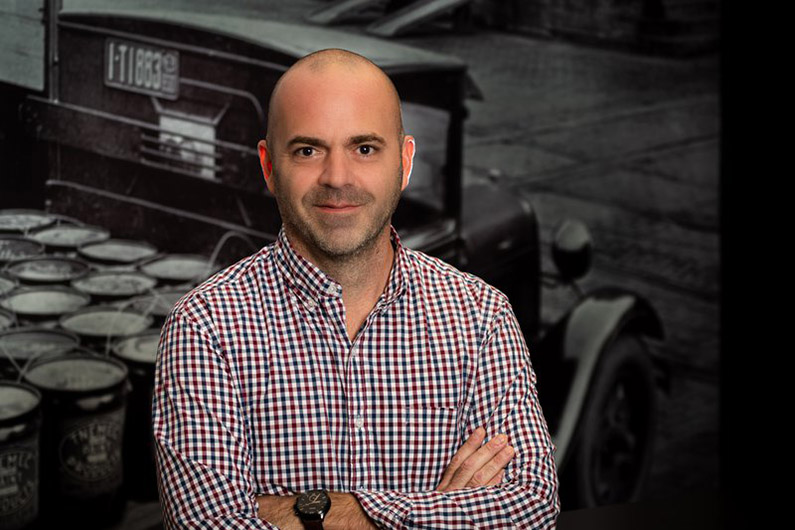More news
- Focus on industrial: Powering the energy industry during extreme heat
- Focus on powder coatings: The coatings industry’s transition to PFAS/PTFE-free solut...
- “We see sustainability as a purpose, as a reason for doing business” – P...
- Focus on industrial: High-performance coating protects tanks at biopolymer production plan...
- Focus on powder coatings: Novel high-speed crosslinking technology

As part of its Focus on Marine, this month PPCJ spoke to Andy Margarit, Director of Marine Market at Tnemec, to find out more about the North American company and the major trends and challenges in the marine coatings industry
Q. What are the biggest challenges faced by ship owners that coatings can help with, and what are your customers most focused on when they discuss a coating with you?
A. Vessel owners are consistently painting these vessels. They come in regularly for drydock and get their coatings updated. This may be as simple as a “shave and a haircut” or a much more in-depth project that involves replacing tank linings like ballast tanks, or potable water coatings. While topside paint can be done fairly easily, when you have to address tanks things can get expensive and time intensive quickly. These tanks usually need to be fully blasted, all the media removed and a coating system reapplied. And since you are in confined space, this is extremely costly and time intensive.
Tnemec has always believed that performance matters when it comes to paints and coatings. If a coating can extend service life of a vessel, or part of that vessel, that can be a huge savings for a ship owner. This is what gets the vessels owners attention. The industry has become so accustomed to only getting 3,4 or 5 years out of some of their tank coatings. What if we can double that service life, to 6-8 years…or even 10?? If a vessel owner can have less maintenance painting to do at drydock, they can get that vessel back to work faster and you are not paying all the labour, time and other costs that come with repainting these areas all the time.
Q. Which geographic regions does Tnemec supply to and do you notice different requirements from customers in different regions?
Tnemec oversees customers globally. Beyond our North American footprint, we have a plant and manufacturing facility in Shanghai and representatives around the world. Every region tends to have coatings that are more popular or work better depending on the location. Our Middle East representatives have some slightly unique needs than our customers in Poland, for example. Coatings apply and act very differently based on ambient weather conditions and these will vary depending on what properties that region of the world would require.
When we talk about anti-foul coatings these also will vary depending on region. Many of these products contain pesticides of one kind or another to stop that marine growth. This means these coatings are highly regulated by each county or region and usually require approval from the local government/agency that controls pesticides. You even notice that microcosm here in the US. Southern California has different VOC and HAPS levels that are allowed than other areas of the US, so even the coatings that go into different markets within the US can have some slightly changes in the coating formulation to fit local guidelines.
READ MORE:
Focus on marine: Hempel dives into sustainability collaboration
Q. Is sustainability a big concern in this sector, or is the emphasis on performance? Does Tnemec have any particular sustainability initiatives that it offers its customers?
A. This is a great question. Water-based technologies have made a lot of improvements over the last few years. Moving away from the solvent-based counterparts would have been a big deal environmentally. While the performance gap has shrunk between the performance of a water-based coating vs its solvent-based cousin, in many cases, especially given the conditions these vessels travel in, the water-based coating systems just aren’t used yet throughout the vessel. Tnemec has been a leader in bringing performance-based, waterborne technology to the market.
Q. How, as a coatings manufacturer, do you cope with the changing regulatory landscape around the world for marine vessels?
A. There are a lot of moving parts within the regulatory landscape, especially these days. At Tnemec we have a whole team that deals with regulatory affairs and try to keep an eye not only where we stand today with these regulations but what changes are being looked at for down the road. A lot of these changes take a long time to come about and if you plan properly, the changes can be incorporated into coating formulations so that the coatings are ready to release as the regulations come into effect.
Q. Are there any emerging trends that you think will become a major point of focus for the marine coatings industry in the future?
A. I still think you will continue to see advancements in water-based technology. From tank linings to finish coats, these coatings have come a long way and most manufacturers have spent a lot of time and money to bring high performance water-based coatings to the marine space. There are also technologies in tank linings that can give vessel owners 20+ year service life on their systems. Unfortunately, some of these coatings are more difficult to apply and require speciality equipment (plural component) that most shipyards do not utilise at the moment. As shipyards and vessel owners see the benefits of these coatings and the extended service life they offer, I think you will see these systems utilised more and more.
READ MORE:
Q. Have you noticed a change (increase or decrease) in demand from any particular regions in the post-COVID landscape?
A. Not a tonne, to be honest. These vessels need to be maintained consistently and while COVID may have initially have a minor effect in demand, that demand came back fairly quickly
Q. Do you still notice any hangovers from the COVID pandemic or is business back to usual?
A. Things are finally getting back to normal. Our industries main issue was more on how COVID affected the supply chain. There were about 18 months to 2 years that no paint manufacture could maintain a steady raw material supply, and this affected the ability to supply the vessels and shipyards with the same materials they always expected in a timely manner. These coatings are complex and build with many different raw materials. If one piece of the puzzle was missing, whether it be resin, pigments or a performance additive, it made supply challenging at times. Luckily Tnemec was nimble enough work through that supply chain issue without any major disruptions.
Q. And finally, please tell us about Tnemec’s recently launched HullClad line of coatings – what benefits do the products offer to shipowners and what new innovations are there?
A. HullClad is a line of self-polishing anti-foul coatings. The line consists of an epoxy primer (Series 190), and epoxy tie coat (series 191) that gives you a five day window to get the anti-foul product applied over it. Typically these AF products need to go on a tacky epoxy, which depending on weather conditions can be difficult to maintain for any extended period of time. With Series 191 those question marks are no longer an issue. We then have Series 194 and 195; these are our anti-foul coatings. These are copper-based and will give the vessel from 36-60+ months of fouling protection. These products are going to help Tnemec Marine provide a full line of products for most marine vessels.







